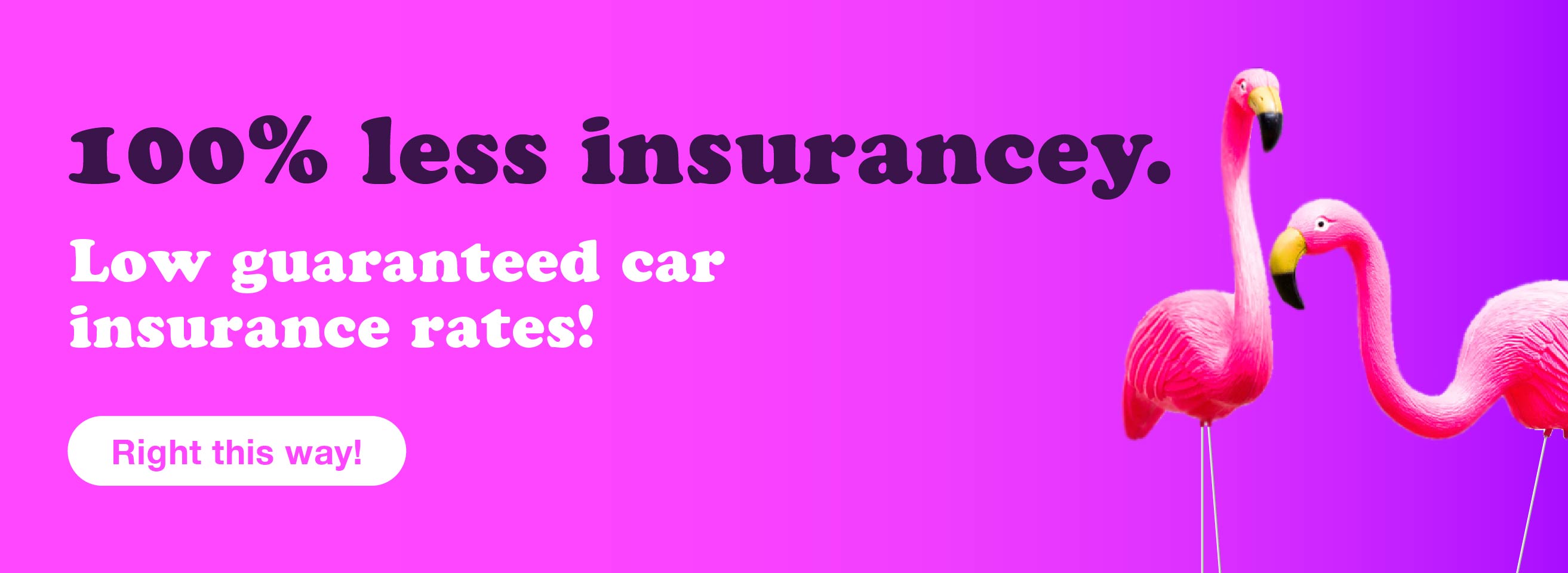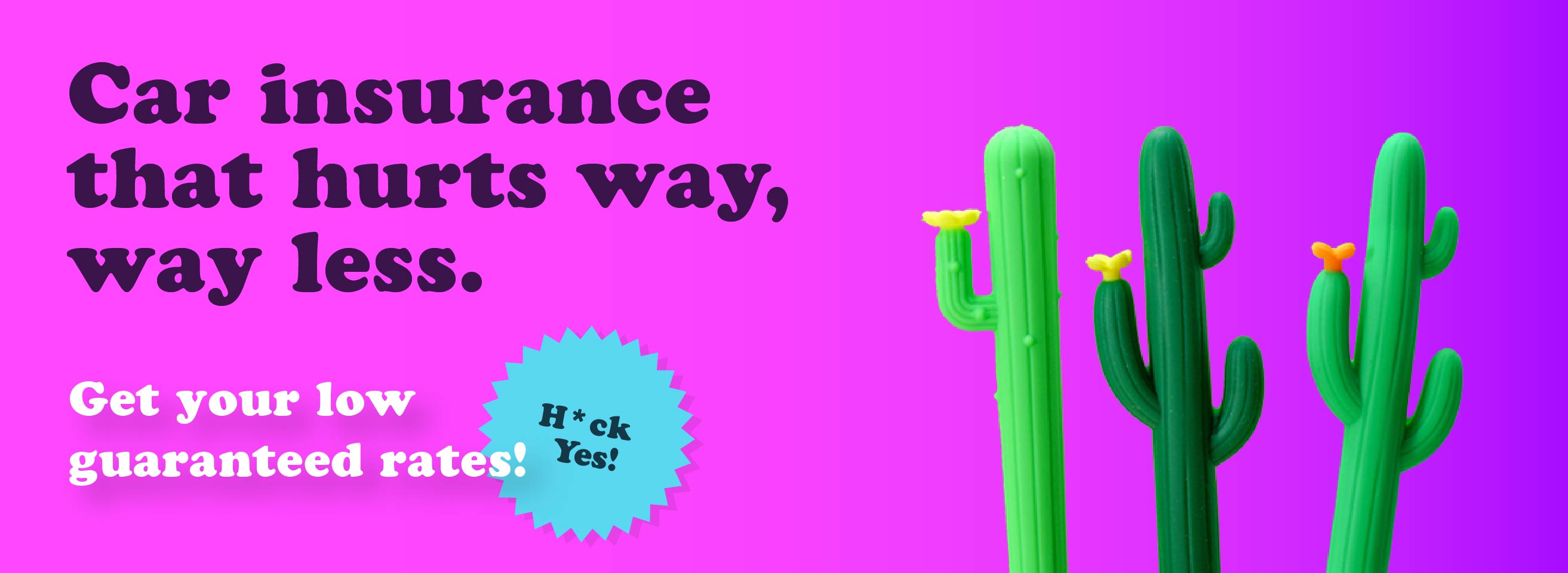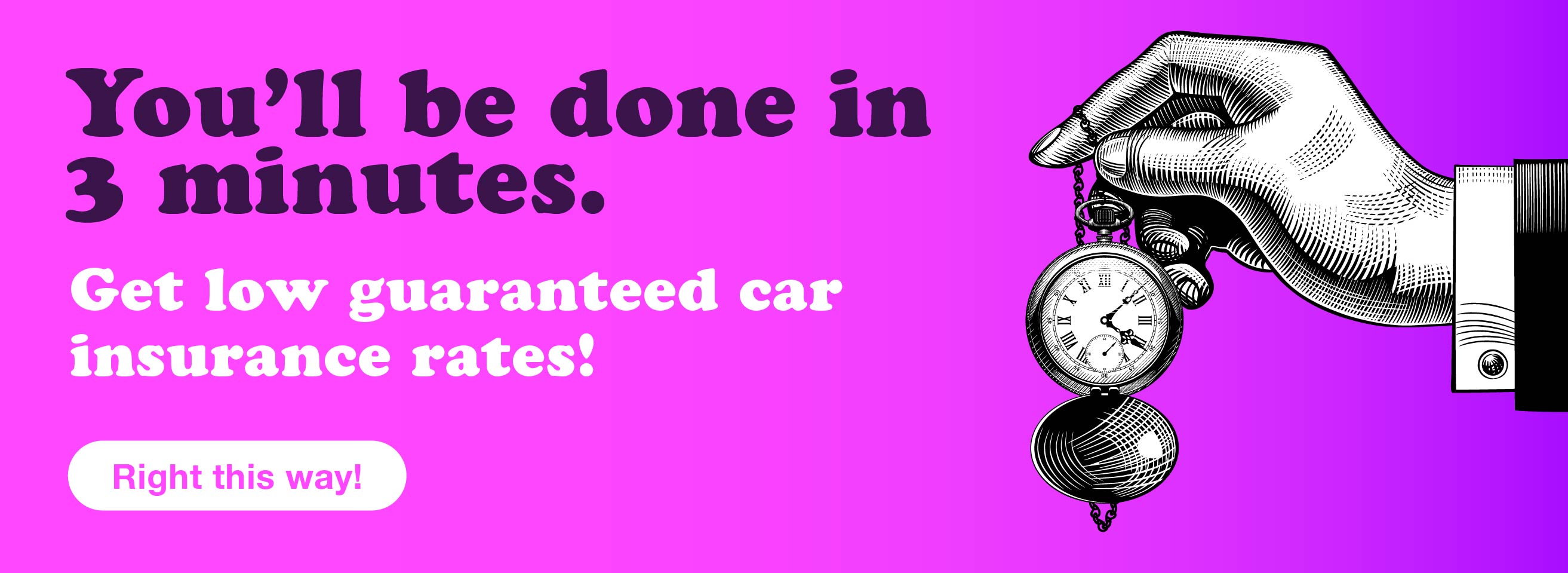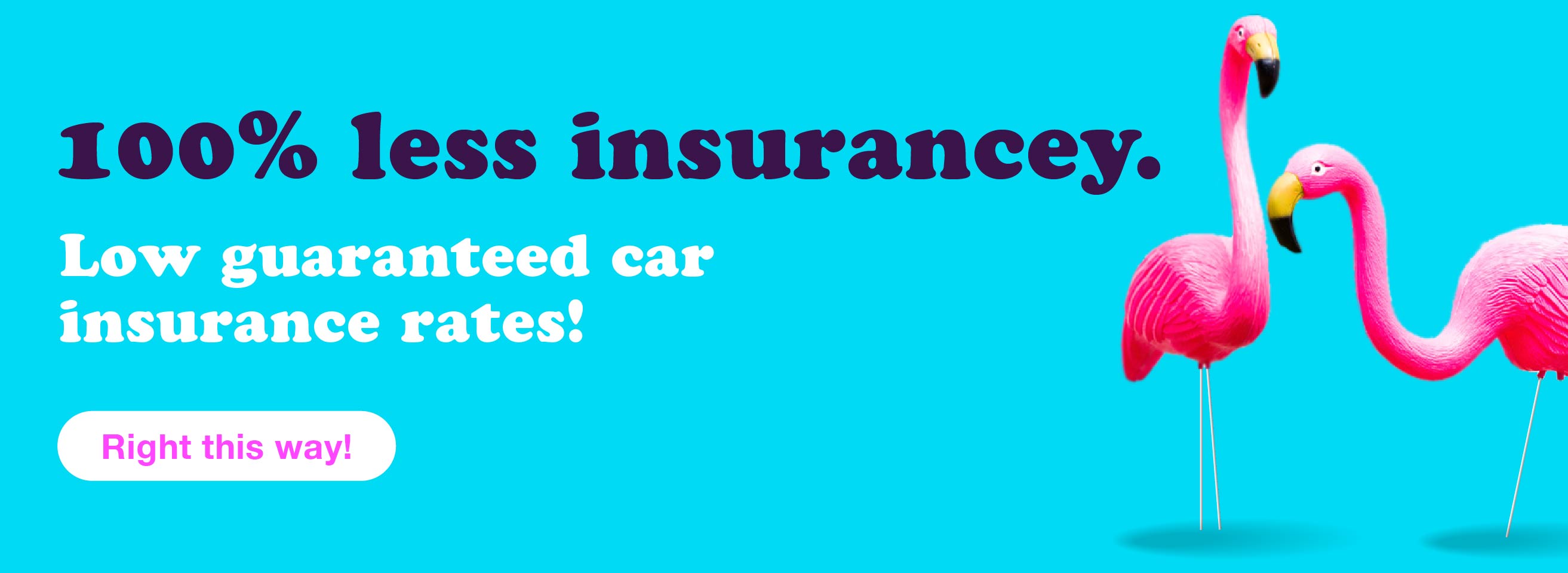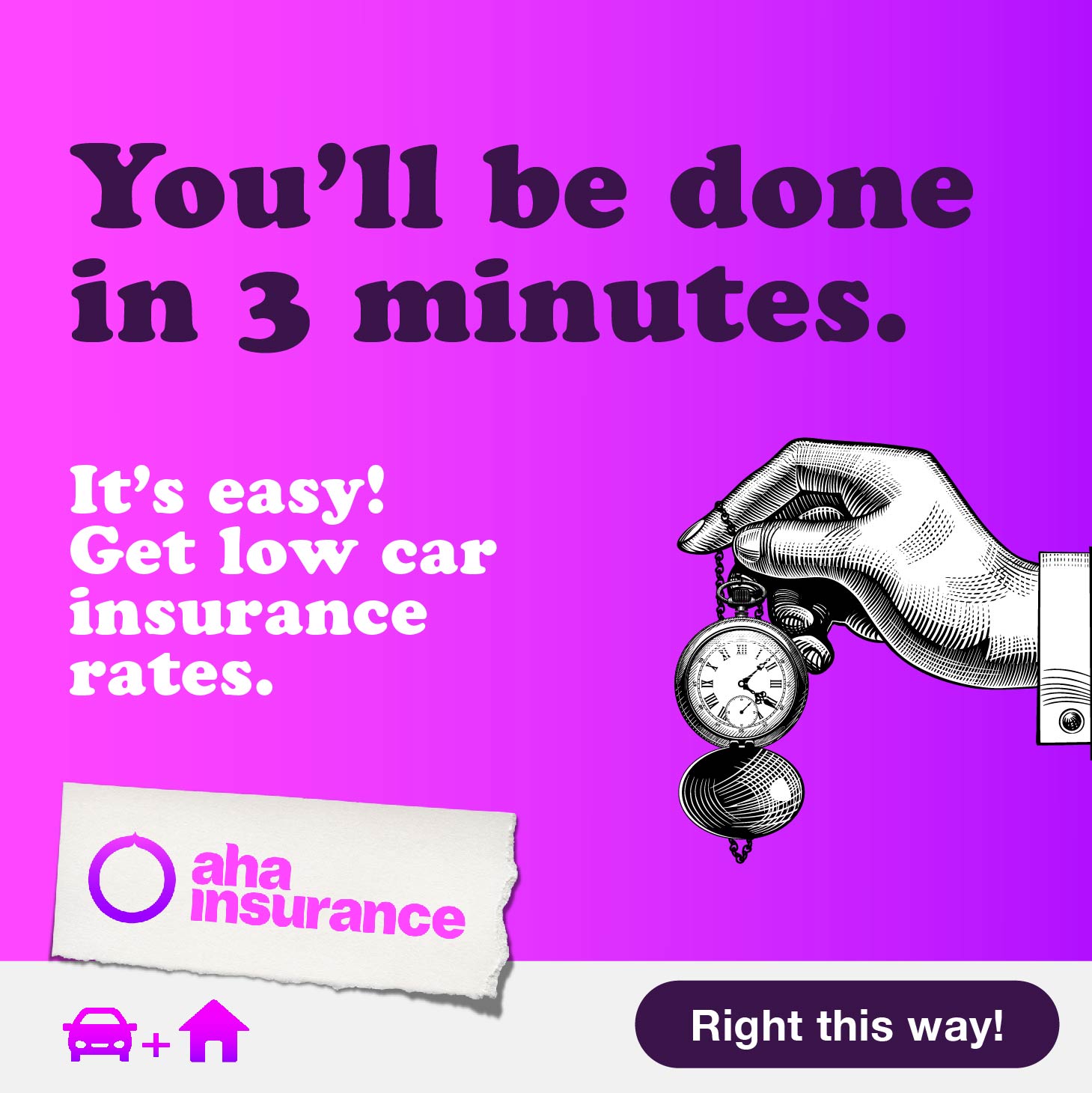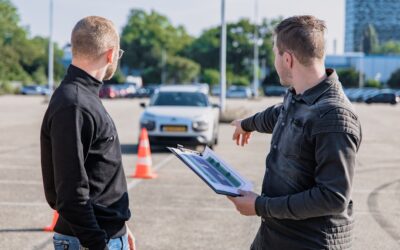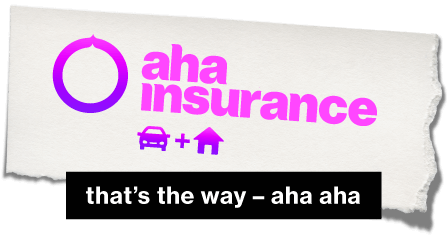Guide: Buying a used car in Ontario
How to Buy a Used Car in Ontario and Save Money
There is a commonly held belief that in the car sales industry salespeople will try to win you over and have you overpay for vehicles. You might be surprised to learn that used car dealerships must follow regulations to keep prices fair for the car buyer and car salesperson.
With that being said, it’s always a good idea to go into car dealerships prepared by knowing how to buy a used car in Ontario. By doing this you’ll end up with more years of satisfaction with the car you end up buying—and a car that’s cheap to insure.
How to Buy From Used Car Dealerships in Ontario Without Getting Burned
The first thing you want to do is give yourself a good chunk of time to research and assess your budget and to decide on the features you want. This will help if you’re approached by a ‘pushy’ salesperson. Give yourself time so you aren’t stuck in a position where you need a car right away. Instead, it’s better to have the time and power to make a confident buying decision.
To determine a budget, you’ll want to think about what expenses will come with the car you’re interested in buying. The major things to consider are:
- The lifespan of the car
- How much repairs and maintenance will cost
- The cost of insurance for that car
- Monthly payments for the car
- Fuel economy
- License plate and sticker renewals
Once you know your number, you can enter used car dealerships in Ontario with a strategy to get the car you want for the price you want.
The next thing you’ll want to think about is what you’re looking for in the vehicle you’re wanting to buy. What features are important to you, that you must have and what can you live without? Do you need that sunroof? Are you concerned with gas mileage? Does it need to accommodate a large or growing family? Or do you just want it to go fast?
Once you have a good idea about these details it’s time to shop the used car dealerships. If they show you the perfect car, that car you’ve been dreaming of, make sure to take it for a test drive, ask about it’s history and look up the VIN number. By searching the vehicle’s VIN you’re able to learn about the history of the car including manufacturer recalls and accidents.
Another source you can reference to learn more about a car’s history is Transport Canada.

How to Buy Cars Online Safely
Learning how to buy cars online safely and avoiding scams is easy once you know what you’re looking for.
When browsing the web for cars that you like, always look for car ads that have several pictures of the vehicle and give a thorough description. Usually, the more detail the owner is willing to provide, the more likely it’s a legitimate car ad and not a scam.
After finding a car that you’re interested in, the next step is to compare the car price to other cars of similar value. This means looking at other cars that are:
- Are currently for sale and in your budget range
- Are the same make, model, and year
- Have driven a similar amount of kilometres
Once you’ve done your research and everything checks out, set a time to meet with the owner of the car you’d like to buy in a public place, and preferably near a police station. Ask them questions face-to-face and take the car for a test drive to make sure everything is working properly. For safety and extra help, it’s best to bring someone along.
The last step and most exciting part of buying a car online is the transaction. The transaction should be done in person with cash or another form of certified funds. This will provide the seller with peace of mind and a smoother transfer of ownership.

Leasing vs. Buying a Car: What’s Best for You?
To lease or buy a car: the eternal question. In summary, here are the facts when it comes to deciding whether the right decision for your monthly budget. Vehicle financing via a loan will cost more every month, but by the end of the term, you’ll own the car. Car leasing, on the other hand, has a significantly lower cost, but by the end of the agreement, you’re without a car again.
If you want to buy but don’t have the funds to make an outright purchase, then you’ll need to take out a loan. Let’s assume, for the sake of simplicity, that the car you want costs $20,000 and you’re able to get a loan with no down payment. You’re going to have to pay off that $20,000, plus interest, over the term of the loan. It’s doable, but that’s a big financial commitment.
Let’s say you decide to lease as an alternative. Instead of borrowing the amount required for the purchase of the car, you’re only borrowing the amount the value of the car will depreciate over the term of the lease. That’s the essence of leasing vs. buying a car.
If the car’s value is expected to depreciate 50% over a three-year lease, you only need to finance $10,000 over the lifetime of the agreement. Even if the lease term is shorter than the loan term, financing $10,000 instead of $20,000 will result in much lower monthly payments. It really helps with cash flow.
Once the lease is up, you have the opportunity to trade in your car for a newer model. Although maintaining this cycle means the payments never stop, you do get to enjoy the best years of a car’s life. If you choose to buy, however, the payments will end eventually. That makes car ownership more economical in the long term, provided that the vehicle is kept in good shape.
If you’re committed to leasing, you’re paying less every month for the rest of your life and you don’t have to worry much about maintenance. If you buy, you’re going to pay more in the short-term, but will eventually come out ahead if you take good care of your vehicle.

The Best Time to Buy a Car in Canada
The bad news is that there’s no one specific time and date every year that you can count on being the best time to buy a car in Canada (but there are some clear winners). However, you can also consider this good news because if you miss your chance to buy a used car at say 3pm on December 29th, you still have plenty of opportunities to look for deals on used cars during the rest of the year.
New cars are considerably more expensive, but manufacturers and dealerships tend to heavily advertise when special offers are available. For dealerships that offer both new and used vehicles, these offers can coincide with deals on used cars as well. If you’re looking to buy from a private seller, it’s difficult to pinpoint an exact time when it’s best to buy: individuals might be influenced by new car offers to sell their old cars, but every private seller will be motivated to sell by different personal factors.
It’s also important to give yourself plenty of time to research used cars before you purchase, so buying a used vehicle during the statistically “best time to buy a car” will only be advantageous if you’re confident that you’re ready to make a well informed purchase.
Buy at the End of the Day
When you’re researching the best time to buy a car in Canada, some sources will recommend buying towards the end of a used car dealer’s work day because it’s thought that sellers experience a greater sense of urgency to complete their work in a timely way as the end of their day approaches. This may be true in some cases, but results will definitely vary by dealership and salesperson. Buying a car at the end of the day can sometimes come with its advantages.
Regardless of the time of day you go into a car dealership, be sure to have done your research on the cars that are on the lot. If you walk onto the lot a few hours before closing, prepared with research about the vehicles you’re interested in, the salesperson can easily show you the cars you want to see and they will be keen to close the deal and head home for the day. Give yourself and the salesperson enough time to test drive the car(s), ask for details, and discuss finances.
Visiting a car dealership towards the end of the day could work to your advantage as the salesperson may be more expedient, but be sure not to push it too much as you may not get the attention you deserve if you roll onto the lot five minutes before closing time.

Best Month to Buy a Car
When considering the best time to buy a car in Canada, it’s good to keep in mind that the best months to buy new cars are also good months to buy used cars. In general, the best months for buying a used car in Ontario are:
- September
- October
- November
- December
But you’ll probably get the best deals on new cars in the last two months of the year with December being the best month to buy a car.
This is because car sales usually slow down around this time of year and dealerships may want to get rid of their inventory to make way for car manufacturer’s newest releases. Keep in mind that not every dealership will be offering special sales at the end of the year.
If you’re not finding the deal you’re looking for near the end of the year, there also might be good times of year to buy used cars depending on the type of vehicle you want to purchase. If you’re looking to buy a more sporty used vehicle like a convertible, it might be better to buy during the months of the winter off-season.

Buy at the End of the Quarter or Fiscal Year
Another typically good time to buy new and used vehicles is at the end of a quarter or the fiscal year. The four fiscal quarters for Canadian businesses usually end in March, June, September, and December.
This means that car dealerships might be particularly focused on meeting sales goals as these months draw to a close, and both new and used automobiles leave lots at a faster pace. September is often the end of the fiscal year, and some research shows August car sales tend to carry lower transaction values, even though discounts on SUVs and luxury vehicles are better in December.
By the time December rolls around, the average amount people pay for cars tends to go up, but TrueCar attributes this to the fact that people are buying more expensive, luxury vehicles with the discounts that are offered near the end of the year. So people are spending more on higher-end cars, but they’re also getting better discounts on those vehicles—just like when people spend more to get better savings on Black Friday sales.

Keep an Eye Out for Annual Promotions
Even if you choose not to wait until the end of a fiscal quarter or year, you can still take advantage of special annual promotions. You can focus on sales during holidays and long weekends to get some extra bang for your buck throughout the rest of the year. Car manufacturers often offer monthly special offers, such as:
- Bonus cash
- Low-interest financing deals
- Desirable safety feature at no extra cost
- Delayed payments
- Extended warranties
Should you coordinate your purchase with the launch of a monthly special offer, you’ll probably find a dealership that is enthusiastically promoting their new deals to attract more sales.
Long weekends can prove to be some of the best times to buy new and used cars, too. Automakers carefully plan their annual marketing schedule for car sales, and usually offer special deals to coincide with holiday weekends like Canada Day, Thanksgiving, Family Day, and so on. It may be worth carving out a few hours on a precious long weekend to take advantage of a worthy deal on the car that you know you want.
During periods of high sales caused by good deals, many people bring in their used cars for trade-ins, which can leave a surplus of previously owned vehicles in dealership lots. This means that dealers might be more tempted to give you a good deal on a used vehicle, so they don’t have to spend time refurbishing and selling their excess used cars to secondary re-sellers like auto auctions.
Remember: Some Cars are Rarely or Never Discounted
This is definitely the case for new, high-end, luxury vehicles, but isn’t necessarily the case for the same vehicles if they’re previously owned. Regardless of how much a vehicle costs, the used version is very likely going to be a much better deal, as long as everything is still in good working order. Should you be willing to forego any snazzy advancements that may be part of the newer used version of the car you covet, you could snap up a model from a few years ago that’s still hanging around on the lot when the newer models roll in stylishly during the fall.
The CEO of Carsabi, Dwight Crow, spoke about the opportunity for savings when you buy a used luxury car in an interview with Huffington Post: “Since luxury cars are in high demand during their first few years and less so thereafter, they depreciate incredibly quickly compared to their economy brethren… you can own them for a fraction of the original price if you’re willing to wait just a few years before making the purchase.”

What Car Should You Buy?
“What car should I buy?” It’s not a black-and-white question to answer. There are a number of factors to consider when you’re deciding what car to buy. First, get an idea of what features best suit you and your lifestyle.
After deciding what works with your lifestyle you’ll want to do some more research for the additional expenses and traits that come with the vehicle. Ask yourself these questions:
- How much does the vehicle cost?
- How much do repairs and maintenance cost?
- Is it a vehicle that it is known to get stolen?
- What are its safety ratings?
- Does it need to be fuel-efficient for commuting?
- Does it need to be spacious for a family?
This information isn’t only good to have on hand, but it will also help when you are ready to buy car insurance.
Let’s take a closer look at the deciding factors.
Buy Car Insurance Online Ahead of Time
Regardless of the car you choose, make sure you’ve contacted your insurance company and have bought a policy for your new car before driving it home. It is illegal to drive without insurance, and there are no exceptions to this rule in Ontario. You need insurance to drive it off the lot, after all.
Having an online insurance solution can help the process of taking home your newly purchased used car home. Before buying a car, contact a few insurance companies to see what they think the best cars are to insure and to also get a few different quotes to see which provider offers the most for the best price.
Do Hybrid Cars Lower Your Insurance Rates?
As hybrid and electric vehicles become more common, it’s likely that more insurance companies may begin to offer discounts in the future. Not many insurance companies offer definitive discounts for hybrid or electric cars at the moment, but the industry is expected to do so in the near future—similarly to how winter tire discounts became standard in Ontario.
When shopping for car insurance for your hybrid vehicle, you may find that insurance premiums to be either the same or slightly more expensive. Hybrid vehicles themselves are more expensive and more costly to repair or replace than equivalent vehicles running on standard fuel. One of the main components of a hybrid car is the battery, which is also the most expensive component that could be susceptible to damage in the case of a collision.
It’s likely that Ontario will begin to see electric car discounts in the future, but double-check with your broker before buying and insuring anything today.

Small vs. Large Car Comparison for Safety
There are several things that insurance companies look for when considering safety ratings in a small vs. large car comparison, the most obvious being how well the vehicle protects you and your passengers. Vehicle size plays an important factor here because large vehicles like SUVs and minivans, have more vehicle to protect you and are built higher off the ground. This makes it easier for you, the driver, to see any potential dangers and for other drivers to see you.
Smaller, more compact vehicles may have decent safety ratings, but physically, they’re built with other features in mind—like fitting into small parking lots or to have excellent fuel economies.
Insurers also look for safety features that are built into the vehicle, such as:
- Airbags
- Blind spot warnings
- Anti-lock brakes
- Automatic emergency braking
- Rear-view camera
- Safety exit assistance
- Adaptive cruise control
Every year car manufacturers come out with even better safety technology for their models that help assist drivers and keep them safe on the road.
Considering these features when buying a car will definitely help keep your insurance rate within budget. Looking into what the vehicle is designed for, whether that be with comfort in mind or horsepower, this will often give you a good idea of what the safety rating for that vehicle has. Always do your research on the car you’re interested in so you know exactly what you’re buying.

Tips for Buying a Used Car
One of the best tips for buying a used car is to do your research by shopping around. Most people dread high-pressure sales at dealerships, but you can put pressure on salespeople too! Make sure you’ve done your research before stepping onto the lot so you know what a good deal and a not-so-good-deal look like.
Don’t hesitate to tell a salesperson that you found a better deal on a similar used car elsewhere. If they’re willing to give you a more competitive price that’s great, if not, move on. If it’s possible, compare cars side by side.
Shop Around and Pressure Salespeople for Competitive Discounts
Price is an important factor, but you’ll also want to take into account features, performance, model, year, and any disclosed information from the previous owners if available. For more information on how to compare cars, there are a number of online tools that allow you to enter information on each vehicle to help break down the advantages of each.
You should compare cars side by side when it comes to insurance costs too. Finding the cheapest auto insurance in your area is not a straightforward process. However, understanding how insurers approach the pricing of their policies should provide you with the tools to shop more effectively.
You’re always welcome to check out our prices for your vehicle online or call us and we’ll be glad to help you experience our vision of insurance.

Get the Lemon-Aid Car Guide
You can get helpful tips for buying a used car from Phil Edmonston’s Lemon-Aid Car Guide. You can find older versions as well as the most recent addition, Lemon-Aid New and Used Cars and Trucks 2007–2018, online in both hard copy and digital formats.
The Lemon-Aid guide makes buying a car accessible to those of us who just want well-built vehicles. The authors aren’t afraid to call out car manufacturers about safety features, defects, or quality control, so definitely give it a read. Buying a copy of this book could save thousands of dollars in repairs and maintenance down the road.
Read Car Dealership Reviews
Researching car dealership ratings and reviews will help you determine the best places and sites to visit in your hunt for a used vehicle. Helpful sites include dealerrater.ca and Yelp.
You can refine your search to find car dealership reviews for a dealership that specializes in the make you’re most interested in. In this digital age, you don’t even have to limit yourself to just used car dealerships’ reviews in Toronto. You can skip the traditional dealership altogether and purchase from a reputable used car website like AutoTrader.
If you’re looking for a more home grown option, Ontariocars.ca works with the Used Car Dealers Association of Ontario (UCDA) to help Ontario consumers buy quality used cars online. If you can buy car insurance online, why not buy a used car online too?

Verify Car Ownership In a Private Sale
In a private sale, the current owner of a used car will have what’s called a vehicle permit or vehicle title, which is proof that they own the vehicle they’re selling. Once you purchase a used car and transfer car ownership, you’ll receive your own copy of this green and grey document with your information and the car’s information recorded on it. Make sure that the car’s VIN (listed on the seller’s vehicle permit) matches the vehicle’s actual VIN number.
You also need to show proof of car insurance when a vehicle is transferred to you, so buying car insurance online and ahead of time can put you a step ahead.
When buying a used car in a private sale, you’ll want to confirm ownership and make sure that the vehicle doesn’t have a lien registered against it. The term “lien” refers to when an owner uses their vehicle as collateral for a loan from a bank or other financial institution. If you buy a used car with a lien, it could be repossessed if the previous owner doesn’t pay their debt.
During a private sale, the seller of a used car is legally required under the Ontario Highway Traffic Act to give you a Used Vehicle Information Package (UVIP), which will contain lien and other important information you’ll need to confidently transfer car ownership in Ontario. Sellers don’t need to provide a UVIP if they’re registered used vehicle dealers or if they’re transferring ownership within their families.
It’s also a good idea to obtain a Safety Standards Certificate, particularly when you’re buying a vehicle privately. This gives you more confidence when buying, and will let you avoid paying for unexpected expenses to have the vehicle brought up to safety standard. A Safety Standard Certificate is also a requirement when transferring car ownership in Ontario in order to get your registration and license plates.
It serves as proof that a used car met minimum safety requirements when it was examined at an MTO licensed inspection station. A Safety Standards Certificate is valid for up to 36 days after an inspection, so it’s best to procure one once a sale is close to closing.
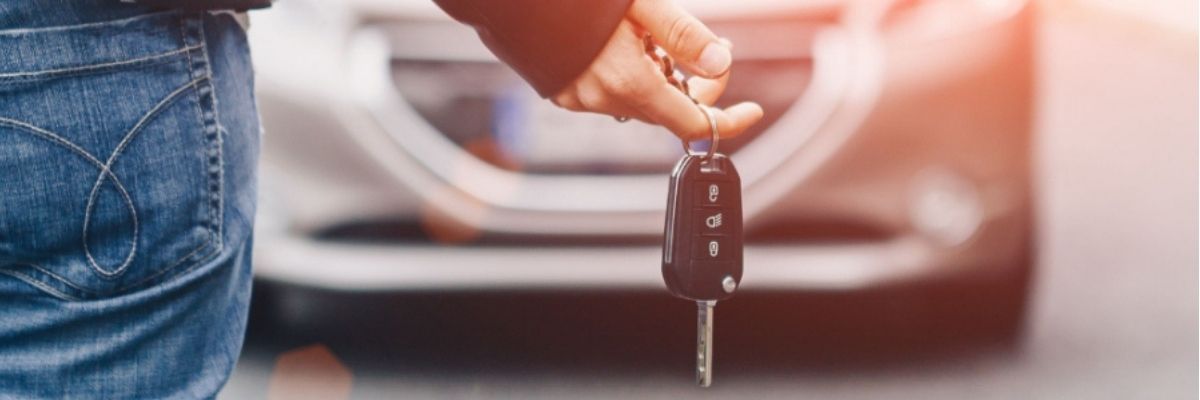
Take Every Car for a Test Drive
You want to enter a used car test drive having already done some research on what features you’re looking for in a vehicle since you’ll probably only have time to test drive a few candidates that make the short list of what you’re looking for in a new, used vehicle.
Make sure to bring someone with you who hopefully has some experience with driving and buying used cars to help examine the car from a passenger’s perspective. Just like you would before starting a driving test, it’s also important to inspect a used car before taking it for a test drive. In addition to making sure everything is safe and in working order, does the car feel comfortable and intuitive to use?
You might already be in love with a particular used car before you test drive it, but it’s important to stay as open-minded and as unbiased as possible. Even if you think you’ve found your dream car, you don’t want those rose coloured glasses to keep you from noticing any major problems that could be dangerous or expensive to fix down the road.

How to Buy a Car in Toronto
There’s more to buying a car than just taking it around the block. You’ll need to make these preparations before you drive off the lot with a car in Toronto, especially if it’s your first one:
- Buying your license plate.
- Anticipating the sales tax on your car.
- Getting an Ontario Drive Clean certificate (until April 2019).
- Obtaining a Safety Standards certificate if the car doesn’t already have one.
- Test the car thoroughly and bring a car enthusiast with you (more on this below!).
- Meet the seller around a police station for extra safety.
- Ask the seller for gas mileage information ahead of time, if possible.
You can read 5 Car Maintenance Tips to Stay Safe On the Road for more information. Keep that info on-hand as you inspect the vehicle.

What to Look for When Buying a Used Car
Every car on the road has a unique Vehicle Identification Number (VIN). Make sure you record the VIN number of any used vehicles you’re thinking of buying so you can use it to get a free vehicle history report. A Quick google search for “free vehicle history report Canada” will give you a number of free online vehicle history report services.
When you get your auto quote, your insurance provider will also check your car’s VIN to make sure there’s nothing about your vehicle that would be considered an increased risk to your insurance company. You can read about cars with the best safety ratings right here to narrow your search right away.
Get a Free Vehicle History Report in Canada
Many sites offer both free VIN checks and more detailed vehicle history reports for a fee. In Ontario, the Trillium Auto Dealers Association (TADA) compiles vehicle history reports. You can also use:
With any paid or free vehicle history report, make sure to read the fine print. For example, CarProof, now called CarFax, didn’t collect police records of accidents before December 15, 2010. It’s also possible that a used car was involved in an accident that was never reported to the police or an insurance company. When you’re trying to investigate the possibility of an unreported accident, an inspection from an independent mechanic will come in handy.
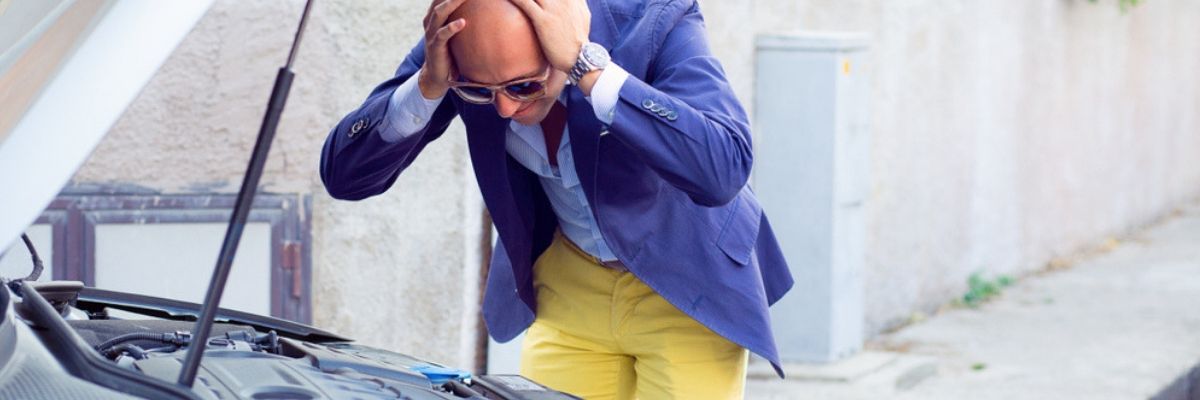
Ask for a Used Car Inspection Before the Sale
Free vehicle history reports are a useful tool, but they certainly don’t give you the entire story about everything a used car has been through. A dealership also might not give you all of the information on a car’s past that you’ll need to make an informed purchase.
That’s why it’s a good investment to hire an independent mechanic to inspect the vehicle you’re considering buying. If the used car inspection reveals any minor issues that aren’t deal-breakers, you can bring your findings to the dealership to negotiate a better price. For more information on used car inspections, visit this Pre-Purchase Inspection guide from CarFax.
Record Car Mileage in the Odometer
Even if an inspection determines that a used car has a clean bill of health, car mileage is another potential source of wear and tear on a car over time. For example, the distance you commute to work every day is taken into account by insurance providers when they calculate your auto quote.
Tampering with an odometer is illegal because the odometer reading needs to provide an accurate record of the total distance a car has traveled since it was manufactured. With that being said, a high mileage read on the odometer isn’t necessarily a bad sign. Many cars can remain in good condition with high mileage with proper maintenance.
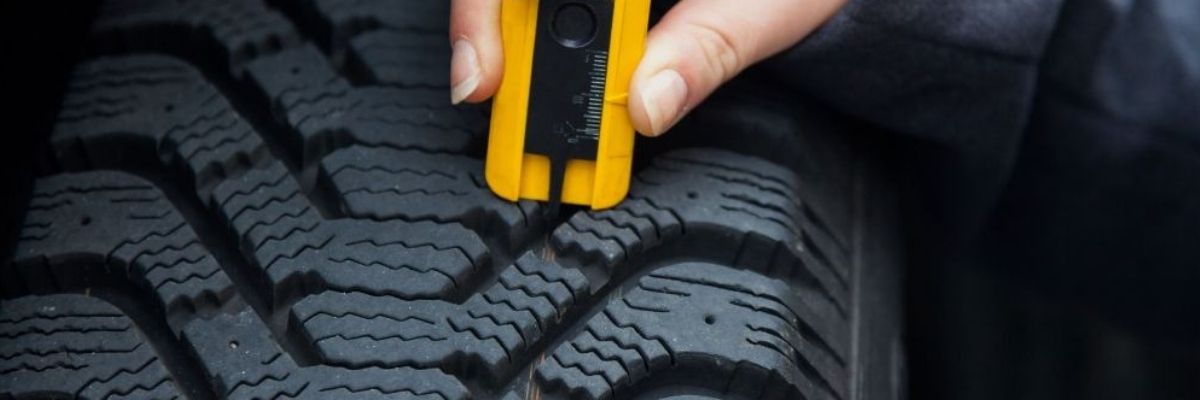
Check Tire Tread on All 4 Wheels
Typically, a car’s tires will need to be replaced every 40,000 to 80,000 kilometers. If you don’t know when a used car’s tires were last replaced, there’s an easy way to determine how much life is left in them: checking tire tread.
You can quickly check how much tread is left on your tires, and this will give you a solid indication of whether a used car’s tires are safe, nearing the end of their life, or needing to be replaced immediately. Understanding how to check tire tread is all about reading the depth, or how much tread tires still have left. There are tire tread depth gauges that you can buy for a few dollars. It’s the most reliable way to check tread, but not the only way.
Look for Rust on a Car in Multiple Places
When you’re considering what to look for when buying a used car, excessive rust on a car is an obvious sign that the used vehicle you’re inspecting is past its prime. However, not all rusted parts of a car are equally concerning.
Inspect the car’s undercarriage for rust: if the chassis or body panels are rusted, that’s more concerning than if the muffler or exhaust components are rusty. If any parts of the car’s body that can’t be easily replaced are rusted through, it’s a strong indicator that you should pass on buying the car.
Ride Time recommends also inspecting:
- The trunk outside and under the interior carpet
- Hood and engine enclosure
- Doors (especially around the hinges)
- The moulding
- The door and rocker panels
When checking for rust on a car you should also keep your eyes peeled for signs that rust damage has been repainted without repair. The seller should disclose if rusted parts of the car were repaired and painted over. As long as the process was handled correctly, this shouldn’t impact the vehicle’s fitness for purchase. But if the previous owner has painted over rust damage without properly treating it, that’s a red flag.
Take a good look at the car’s paint job in full sunlight, searching for any inconsistencies. Look for paint bubbling that occurs when rust has been painted over, also look for varying thickness and opaqueness of paint, which are signs of painted over rust on a car.
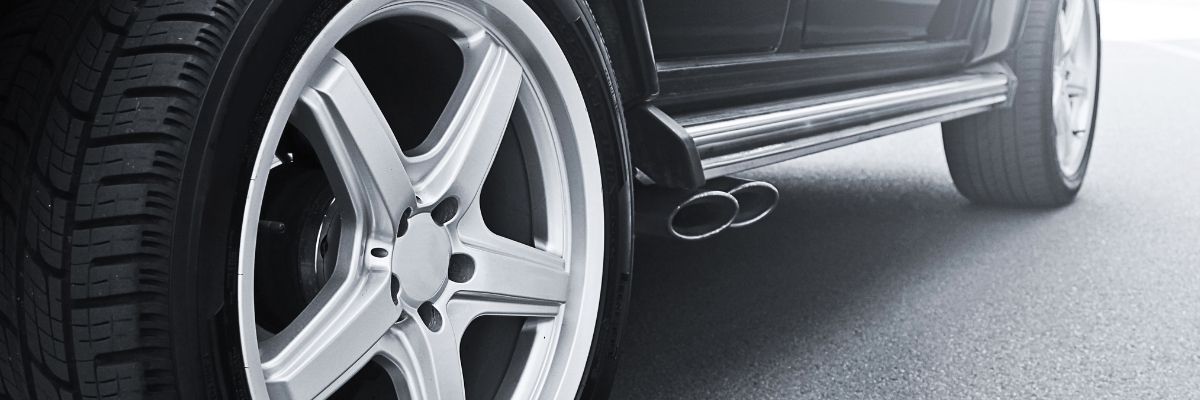
Make Sure the Mini Car Jack is in the Car
A used car should come with its very own mini car jack. It’s one of those pieces of equipment that you need in your car for emergency repair situations. Speaking of emergency repair equipment, your used car should come equipped with a spare tire as well.
If the used car you’re looking at still has its original, ask the seller to show you where it’s kept, different makes and models of cars come equipped with different storage areas for mini car jacks and other equipment. If you want to test it, make sure you do so with someone who’s experienced at lifting cars and who has additional safety equipment like jack stands.
Bring a Car Enthusiast to Check the Car Frame
For those of us who aren’t car enthusiasts, we don’t know much about inspecting vehicles. Car frames are like the skeleton of a car: crucial to its structural integrity, but you can’t get the whole picture from observing a used car from the pain alone. Bring along someone experienced!
Don’t worry if the car enthusiast in your life is unavailable to come with you, though. You can also ask your favourite mechanic to inspect the vehicle too. Understanding the condition of a used car’s frame is crucial because it protects passengers in the event of an accident.
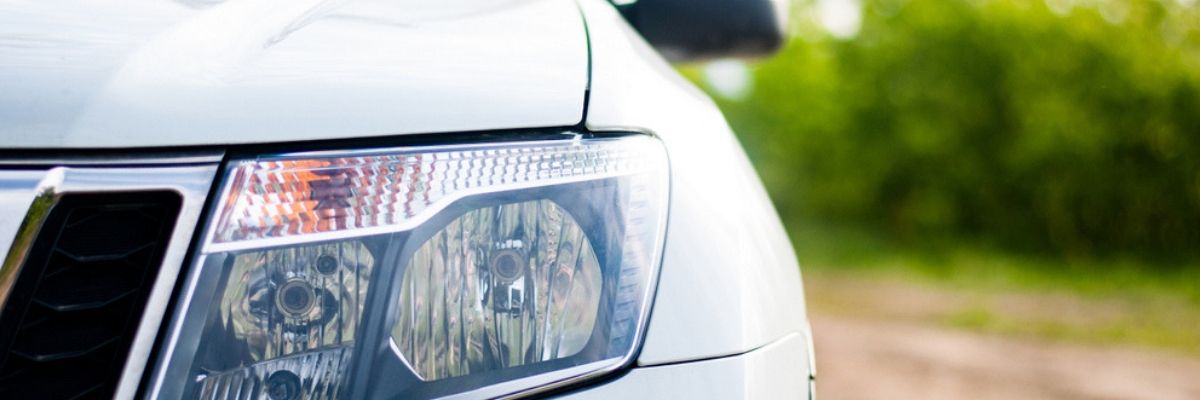
Rule Out the Car Leaking Oil (or Other Fluids)
When you’re thinking about what to look for when buying a used car, leaking oil or any other mystery fluids is a pretty obvious sign that there’s something wrong, but finding oil and other fluid leaks often aren’t as easy as seeing a puddle on the pavement.
To be sure that a used car isn’t leaking any fluids you’ll first want to have a visual inspection performed, and then have you or someone you trust look under the hood to check for leaks underneath. Check the oil level in the engine, if it’s less than full, that can be a sign of the car leaking oil.
Another indication is any accumulated oil present around the valve cover of the engine. A mechanic can hoist the vehicle up to inspect all the parts of a used car that are prone to leakage. If you do see leaked fluid around a used car you’re looking at, you can use this quick guide to diagnose the leak. In addition to engine oil, you’ll want to make sure that none of these fluids are leaking as well:
- Transmission Fluid
- Power Steering Fluid
- Brake Fluid
- Water
- Fuel (it’s a fire hazard!)
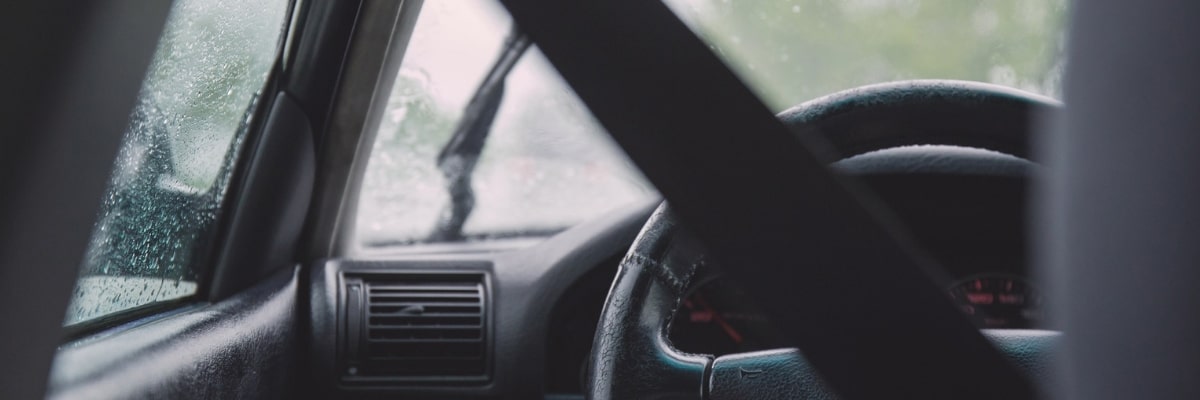
Double-Check the Car Belts Aren’t Damaged or Whirring Strangely
We don’t have to tell a savvy used car buyer like you that car belts are not fashion accessories. Many of us don’t know exactly what they do, but we know we don’t want any part of our used car to be damaged or making concerning noises. A trusted technician should especially check for cracks in the belts of used cars.
Every car belt and hose plays an important role in keeping your engine running. Here’s a brief description of each:
- Serpentine/Drive Belt: This belt provides power to important cooling systems in a car like the air conditioning, cooling fan and the air injection pump. If a serpentine car belt breaks, it will cut the power to all of the engine parts that rely on it and could lead to overheating and engine damage.
- Timing Belt: If you can hear a slapping sound around the car’s engine, this could indicate a slipped timing belt, which could cause the engine’s valves to collide with its pistons and lead to serious damage.
- Hoses: While not belts, hoses facilitate the cooling and heating of your car, if cracks caused a host to burst, the engine would overheat.
See Consumer Reports for information on How to Inspect Car Belts and Hoses.
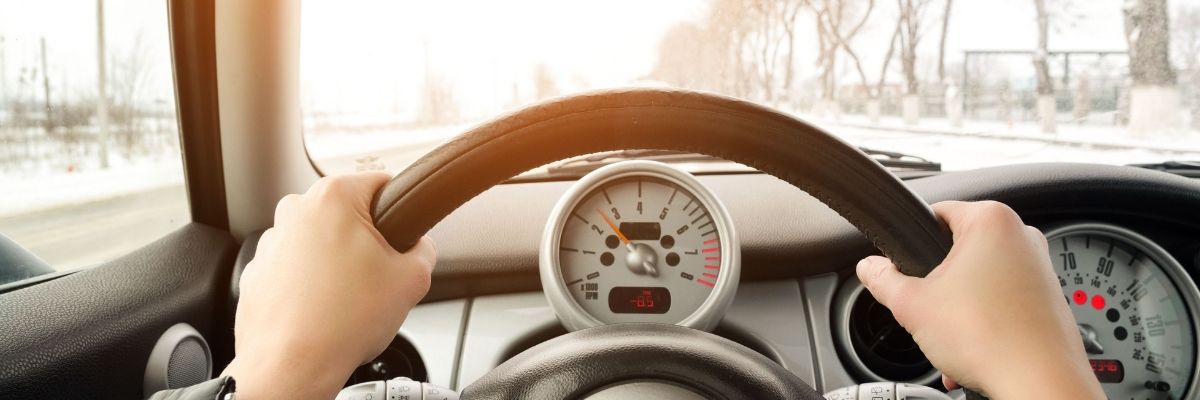
Double-Check All Used Car Electronics
With all of the other aspects of pre-owned vehicles on your mind, don’t forget about those used car electronics! The newer and more high-tech the used car you’re considering is, the more tech you’ll need to check, including the cigarette lighter for charging devices and AC/heating unit. It also costs more to replace.
Test out these used car electronics before buying:
- Heating and air conditioning
- Radio (and CD player there is one)
- The cigarette lighter (for charging devices with an adapter)
- Auxiliary port for audio cables
- Screens in the back seat
- Rear-view camera
- Blind spot detection
- Smartphone integration
- Built-in GPS
- Dashboard lights
Don’t be afraid to test out these features during a test drive—just be thorough!
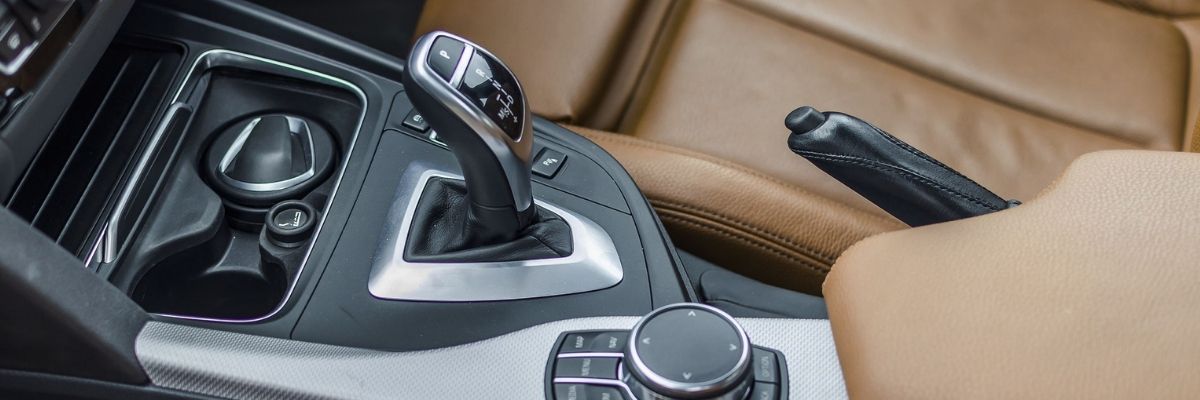
Checking Transmission Fluid is Crucial
Transmission systems are complicated, so it’s probably worth getting a professional to check it out before buying a used car in Ontario. A transmission fluid leak could be caused by a number of transmission issues.
When checking transmission fluid, remember that only automatic cars use transmission fluid. Cars with manual transmissions use gear oil. Automatic transmission fluid should be checked while the vehicle is running in park or neutral, but a manual transmission’s gear oil can only be checked from underneath the vehicle.
How to Check Transmission Fluid Level
A vehicle’s owners manual contains in depth instructions on how to check the transmission fluid level. It’s both a valuable resource and a sign that the previous owner has prioritized taking care of the car.
Because your car needs to be running when you check the transmission fluid (and you may need to work under the hood around active machinery), contact a professional unless you feel confident you can safely perform the procedure yourself.
You can find a good general guide to checking transmission from Mister Transmission.
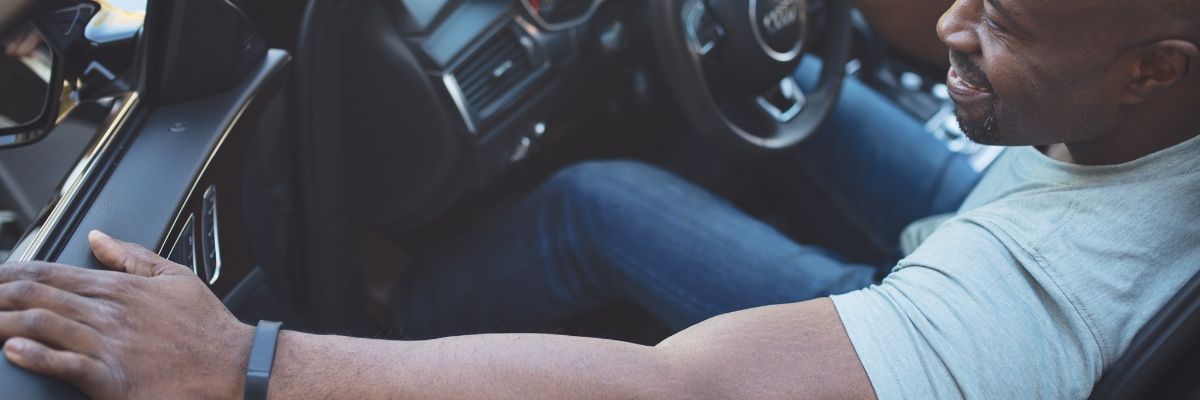
Ask the Seller to Give the Inside of the Car a Cleaning
Now that we’ve looked at the nuts, bolts, gears and pulleys, belts and hoses of what to look for when buying a used car, what about how well the car looks taken care of from the inside? We probably don’t need to tell you, but… don’t buy anything with gum hidden under the seat or stained upholstery.
If the car’s interior is an overwhelming mess, you probably wouldn’t think twice about asking the seller to clean up the merchandise, but even if the used car appears relatively clean, chances are it could still benefit from a good wash. Inside car cleaning is important because used cars accumulate a lot of germs and bacteria—some research suggests even more than toilet seats!
Here’s a list of some inside car-cleaning jobs you can ask the seller to complete before you buy:
- Wipe down and polish the steering wheel, dashboard, gear shift, center console and cupholders
- Vacuum the upholstery and scrub out any stains
- Wash or replace the floor mats
- Replace air filters
- You can even disinfect your new keys

Conduct a Service Brake Test
Finally, in our exploration of what to look for when buying a used car, we’ll talk about one of the most important and basic safety features of any car: the brakes.
Check the brake components on the wheels for signs like these:
- Make sure the brake-shoe lining contacts the drum.
- See if the brake lining is cracked, loose, or missing altogether.
- Inspect the brake lining for thickness (if it’s too thin then it may need a replacement).
- Check for audible air pressure leaks.
- Look for cracks and holes (that aren’t supposed to be there).
- Air brake chamber sizes that don’t match in size on steering axles.
- Different lengths for the slack-adjusters on the steering axles.
Watch for these more obvious signs when taking a car for a test drive:
- Do the brakes work when you press down hard and quickly?
- Do the brake pads complain loudly when you brake?
This is an early indicator that a used car’s brake pads are starting to wear. Brake pads should be checked regularly, but there’s no exact amount of time that they’ll last, especially when considering a used car because brake wear will depend on how (and where) the previous owner was driving.
Brake pads will wear sooner if the previous owner was braking more often as a result of driving in busy urban areas, as opposed to cruising through rural highways. When you take a used car in for a mechanic to service, a brake test will give you the information about brake health that will give you peace of mind when you’re test driving your used car and eventually driving it off the lot of the used car dealership!
That’s our guide to buying a used car in Ontario! Keep it handy whenever you stop by a dealership or go to a meeting for a private sale. Happy hunting, and don’t forget to get a quote for every car you might buy!
How to Buy a Used Car in Ontario and Save Money
There is a commonly held belief that in the car sales industry salespeople will try to win you over and have you overpay for vehicles. Although this may have been true several years ago, used car dealerships must follow regulations today to keep prices fair for the car buyer and car salesperson.
With that being said, it’s always a good idea to go into car dealerships prepared by knowing how to buy a used car in Ontario. By doing this you’ll end up with more years of satisfaction with the car you end up buying.
How to Buy From Used Car Dealerships in Ontario Without Getting Burned
The first thing you want to do is give yourself a good chunk of time to research and assess your budget and to decide on the features you want. This will help if you’re approached by a ‘pushy’ salesperson. Give yourself time so you aren’t stuck in a position where you need a car right away. Instead, it’s better to have the time and power to make a confident buying decision.
To determine a budget, you’ll want to think about what expenses will come with the car you’re interested in buying. The major things to consider are:
- The lifespan of the car
- How much repairs and maintenance will cost
- The cost of insurance for that car
- Monthly payments for the car
- Fuel economy
- License plate and sticker renewals
Once you know your number, you can enter used car dealerships in Ontario with a strategy to get the car you want for the price you want.
The next thing you’ll want to think about is what you’re looking for in the vehicle you’re wanting to buy. What features are important to you, that you must have and what can you live without? Do you need that sunroof? Are you concerned with gas mileage? Does it need to accommodate a large or growing family? Or do you just want it to go fast?
Once you have a good idea about these details it’s time to shop the used car dealerships. If they show you the perfect car, that car you’ve been dreaming of, make sure to take it for a test drive, ask about it’s history and look up the VIN number. By searching the vehicle’s VIN you’re able to learn about the history of the car including manufacturer recalls and accidents.
Another source you can reference to learn more about a car’s history is Transport Canada.

How to Buy Cars Online Safely
Learning how to buy cars online safely and avoiding scams is easy once you know what you’re looking for.
When browsing the web for cars that you like, always look for car ads that have several pictures of the vehicle and give a thorough description. Usually, the more detail the owner is willing to provide, the more likely it’s a legitimate car ad and not a scam.
After finding a car that you’re interested in, the next step is to compare the car price to other cars of similar value. This means looking at other cars that are:
- Are currently for sale and in your budget range
- Are the same make, model, and year
- Have driven a similar amount of kilometres
Once you’ve done your research and everything checks out, set a time to meet with the owner of the car you’d like to buy in a public place, and preferably near a police station. Ask them questions face-to-face and take the car for a test drive to make sure everything is working properly. For safety and extra help, it’s best to bring someone along.
The last step and most exciting part of buying a car online is the transaction. The transaction should be done in person with cash or another form of certified funds. This will provide the seller with peace of mind and a smoother transfer of ownership.

Leasing vs. Buying a Car: What’s Best for You?
To lease or buy a car: the eternal question. In summary, here are the facts when it comes to deciding whether the right decision for your monthly budget. Vehicle financing via a loan will cost more every month, but by the end of the term, you’ll own the car. Car leasing, on the other hand, has a significantly lower cost, but by the end of the agreement, you’re without a car again.
If you want to buy but don’t have the funds to make an outright purchase, then you’ll need to take out a loan. Let’s assume, for the sake of simplicity, that the car you want costs $20,000 and you’re able to get a loan with no down payment. You’re going to have to pay off that $20,000, plus interest, over the term of the loan. It’s doable, but that’s a big financial commitment.
Let’s say you decide to lease as an alternative. Instead of borrowing the amount required for the purchase of the car, you’re only borrowing the amount the value of the car will depreciate over the term of the lease. That’s the essence of leasing vs. buying a car.
If the car’s value is expected to depreciate 50% over a three-year lease, you only need to finance $10,000 over the lifetime of the agreement. Even if the lease term is shorter than the loan term, financing $10,000 instead of $20,000 will result in much lower monthly payments. It really helps with cash flow.
Once the lease is up, you have the opportunity to trade in your car for a newer model. Although maintaining this cycle means the payments never stop, you do get to enjoy the best years of a car’s life. If you choose to buy, however, the payments will end eventually. That makes car ownership more economical in the long term, provided that the vehicle is kept in good shape.
If you’re committed to leasing, you’re paying less every month for the rest of your life and you don’t have to worry much about maintenance. If you buy, you’re going to pay more in the short-term, but will eventually come out ahead if you take good care of your vehicle.

The Best Time to Buy a Car in Canada
The bad news is that there’s no one specific time and date every year that you can count on being the best time to buy a car in Canada (but there are some clear winners). However, you can also consider this good news because if you miss your chance to buy a used car at say 3pm on December 29th, you still have plenty of opportunities to look for deals on used cars during the rest of the year.
New cars are considerably more expensive, but manufacturers and dealerships tend to heavily advertise when special offers are available. For dealerships that offer both new and used vehicles, these offers can coincide with deals on used cars as well. If you’re looking to buy from a private seller, it’s difficult to pinpoint an exact time when it’s best to buy: individuals might be influenced by new car offers to sell their old cars, but every private seller will be motivated to sell by different personal factors.
It’s also important to give yourself plenty of time to research used cars before you purchase, so buying a used vehicle during the statistically “best time to buy a car” will only be advantageous if you’re confident that you’re ready to make a well informed purchase.
Buy at the End of the Day
When you’re researching the best time to buy a car in Canada, some sources will recommend buying towards the end of a used car dealer’s work day because it’s thought that sellers experience a greater sense of urgency to complete their work in a timely way as the end of their day approaches. This may be true in some cases, but results will definitely vary by dealership and salesperson. Buying a car at the end of the day can sometimes come with its advantages.
Regardless of the time of day you go into a car dealership, be sure to have done your research on the cars that are on the lot. If you walk onto the lot a few hours before closing, prepared with research about the vehicles you’re interested in, the salesperson can easily show you the cars you want to see and they will be keen to close the deal and head home for the day. Give yourself and the salesperson enough time to test drive the car(s), ask for details, and discuss finances.
Visiting a car dealership towards the end of the day could work to your advantage as the salesperson may be more expedient, but be sure not to push it too much as you may not get the attention you deserve if you roll onto the lot five minutes before closing time.

Best Month to Buy a Car
When considering the best time to buy a car in Canada, it’s good to keep in mind that the best months to buy new cars are also good months to buy used cars. In general, the best months for buying a used car in Ontario are:
- September
- October
- November
- December
But you’ll probably get the best deals on new cars in the last two months of the year with December being the best month to buy a car.
This is because car sales usually slow down around this time of year and dealerships may want to get rid of their inventory to make way for car manufacturer’s newest releases. Keep in mind that not every dealership will be offering special sales at the end of the year.
If you’re not finding the deal you’re looking for near the end of the year, there also might be good times of year to buy used cars depending on the type of vehicle you want to purchase. If you’re looking to buy a more sporty used vehicle like a convertible, it might be better to buy during the months of the winter off-season.

Buy at the End of the Quarter or Fiscal Year
Another typically good time to buy new and used vehicles is at the end of a quarter or the fiscal year. The four fiscal quarters for Canadian businesses usually end in March, June, September, and December.
This means that car dealerships might be particularly focused on meeting sales goals as these months draw to a close, and both new and used automobiles leave lots at a faster pace. September is often the end of the fiscal year, and some research shows August car sales tend to carry lower transaction values, even though discounts on SUVs and luxury vehicles are better in December.
By the time December rolls around, the average amount people pay for cars tends to go up, but TrueCar attributes this to the fact that people are buying more expensive, luxury vehicles with the discounts that are offered near the end of the year. So people are spending more on higher-end cars, but they’re also getting better discounts on those vehicles—just like when people spend more to get better savings on Black Friday sales.

Keep an Eye Out for Annual Promotions
Even if you choose not to wait until the end of a fiscal quarter or year, you can still take advantage of special annual promotions. You can focus on sales during holidays and long weekends to get some extra bang for your buck throughout the rest of the year. Car manufacturers often offer monthly special offers, such as:
- Bonus cash
- Low-interest financing deals
- Desirable safety feature at no extra cost
- Delayed payments
- Extended warranties
Should you coordinate your purchase with the launch of a monthly special offer, you’ll probably find a dealership that is enthusiastically promoting their new deals to attract more sales.
Long weekends can prove to be some of the best times to buy new and used cars, too. Automakers carefully plan their annual marketing schedule for car sales, and usually offer special deals to coincide with holiday weekends like Canada Day, Thanksgiving, Family Day, and so on. It may be worth carving out a few hours on a precious long weekend to take advantage of a worthy deal on the car that you know you want.
During periods of high sales caused by good deals, many people bring in their used cars for trade-ins, which can leave a surplus of previously owned vehicles in dealership lots. This means that dealers might be more tempted to give you a good deal on a used vehicle, so they don’t have to spend time refurbishing and selling their excess used cars to secondary re-sellers like auto auctions.
Remember: Some Cars are Rarely or Never Discounted
This is definitely the case for new, high-end, luxury vehicles, but isn’t necessarily the case for the same vehicles if they’re previously owned. Regardless of how much a vehicle costs, the used version is very likely going to be a much better deal, as long as everything is still in good working order. Should you be willing to forego any snazzy advancements that may be part of the newer used version of the car you covet, you could snap up a model from a few years ago that’s still hanging around on the lot when the newer models roll in stylishly during the fall.
The CEO of Carsabi, Dwight Crow, spoke about the opportunity for savings when you buy a used luxury car in an interview with Huffington Post: “Since luxury cars are in high demand during their first few years and less so thereafter, they depreciate incredibly quickly compared to their economy brethren… you can own them for a fraction of the original price if you’re willing to wait just a few years before making the purchase.”

What Car Should You Buy?
“What car should I buy?” It’s not a black-and-white question to answer. There are a number of factors to consider when you’re deciding what car to buy. First, get an idea of what features best suit you and your lifestyle.
After deciding what works with your lifestyle you’ll want to do some more research for the additional expenses and traits that come with the vehicle. Ask yourself these questions:
- How much does the vehicle cost?
- How much do repairs and maintenance cost?
- Is it a vehicle that it is known to get stolen?
- What are its safety ratings?
- Does it need to be fuel-efficient for commuting?
- Does it need to be spacious for a family?
This information isn’t only good to have on hand, but it will also help when you are ready to buy car insurance.
Let’s take a closer look at the deciding factors.
Buy Car Insurance Online Ahead of Time
Regardless of the car you choose, make sure you’ve contacted your insurance company and have bought a policy for your new car before driving it home. It is illegal to drive without insurance, and there are no exceptions to this rule in Ontario. You need insurance to drive it off the lot, after all.
Having an online insurance solution can help the process of taking home your newly purchased used car home. Before buying a car, contact a few insurance companies to see what they think the best cars are to insure and to also get a few different quotes to see which provider offers the most for the best price.
Do Hybrid Cars Lower Your Insurance Rates?
As hybrid and electric vehicles become more common, it’s likely that more insurance companies may begin to offer discounts in the future. Not many insurance companies offer definitive discounts for hybrid or electric cars at the moment, but the industry is expected to do so in the near future—similarly to how winter tire discounts became standard in Ontario.
When shopping for car insurance for your hybrid vehicle, you may find that insurance premiums to be either the same or slightly more expensive. Hybrid vehicles themselves are more expensive and more costly to repair or replace than equivalent vehicles running on standard fuel. One of the main components of a hybrid car is the battery, which is also the most expensive component that could be susceptible to damage in the case of a collision.
It’s likely that Ontario will begin to see electric car discounts in the future, but double-check with your broker before buying and insuring anything today.

Small vs. Large Car Comparison for Safety
There are several things that insurance companies look for when considering safety ratings in a small vs. large car comparison, the most obvious being how well the vehicle protects you and your passengers. Vehicle size plays an important factor here because large vehicles like SUVs and minivans, have more vehicle to protect you and are built higher off the ground. This makes it easier for you, the driver, to see any potential dangers and for other drivers to see you.
Smaller, more compact vehicles may have decent safety ratings, but physically, they’re built with other features in mind—like fitting into small parking lots or to have excellent fuel economies.
Insurers also look for safety features that are built into the vehicle, such as:
- Airbags
- Blind spot warnings
- Anti-lock brakes
- Automatic emergency braking
- Rear-view camera
- Safety exit assistance
- Adaptive cruise control
Every year car manufacturers come out with even better safety technology for their models that help assist drivers and keep them safe on the road.
Considering these features when buying a car will definitely help keep your insurance rate within budget. Looking into what the vehicle is designed for, whether that be with comfort in mind or horsepower, this will often give you a good idea of what the safety rating for that vehicle has. Always do your research on the car you’re interested in so you know exactly what you’re buying.

Tips for Buying a Used Car
One of the best tips for buying a used car is to do your research by shopping around. Most people dread high-pressure sales at dealerships, but you can put pressure on salespeople too! Make sure you’ve done your research before stepping onto the lot so you know what a good deal and a not-so-good-deal look like.
Don’t hesitate to tell a salesperson that you found a better deal on a similar used car elsewhere. If they’re willing to give you a more competitive price that’s great, if not, move on. If it’s possible, compare cars side by side.
Shop Around and Pressure Salespeople for Competitive Discounts
Price is an important factor, but you’ll also want to take into account features, performance, model, year, and any disclosed information from the previous owners if available. For more information on how to compare cars, there are a number of online tools that allow you to enter information on each vehicle to help break down the advantages of each.
You should compare cars side by side when it comes to insurance costs too. Finding the cheapest auto insurance in your area is not a straightforward process. However, understanding how insurers approach the pricing of their policies should provide you with the tools to shop more effectively.
You’re always welcome to check out our prices for your vehicle online or call us and we’ll be glad to help you experience our vision of insurance.

Get the Lemon-Aid Car Guide
You can get helpful tips for buying a used car from Phil Edmonston’s Lemon-Aid Car Guide. You can find older versions as well as the most recent addition, Lemon-Aid New and Used Cars and Trucks 2007–2018, online in both hard copy and digital formats.
The Lemon-Aid guide makes buying a car accessible to those of us who just want well-built vehicles. The authors aren’t afraid to call out car manufacturers about safety features, defects, or quality control, so definitely give it a read. Buying a copy of this book could save thousands of dollars in repairs and maintenance down the road.
Read Car Dealership Reviews
Researching car dealership ratings and reviews will help you determine the best places and sites to visit in your hunt for a used vehicle. Helpful sites include dealerrater.ca and Yelp.
You can refine your search to find car dealership reviews for a dealership that specializes in the make you’re most interested in. In this digital age, you don’t even have to limit yourself to just used car dealerships’ reviews in Toronto. You can skip the traditional dealership altogether and purchase from a reputable used car website like AutoTrader.
If you’re looking for a more home grown option, Ontariocars.ca works with the Used Car Dealers Association of Ontario (UCDA) to help Ontario consumers buy quality used cars online. If you can buy car insurance online, why not buy a used car online too?

Verify Car Ownership In a Private Sale
In a private sale, the current owner of a used car will have what’s called a vehicle permit or vehicle title, which is proof that they own the vehicle they’re selling. Once you purchase a used car and transfer car ownership, you’ll receive your own copy of this green and grey document with your information and the car’s information recorded on it. Make sure that the car’s VIN (listed on the seller’s vehicle permit) matches the vehicle’s actual VIN number.
You also need to show proof of car insurance when a vehicle is transferred to you, so buying car insurance online and ahead of time can put you a step ahead.
When buying a used car in a private sale, you’ll want to confirm ownership and make sure that the vehicle doesn’t have a lien registered against it. The term “lien” refers to when an owner uses their vehicle as collateral for a loan from a bank or other financial institution. If you buy a used car with a lien, it could be repossessed if the previous owner doesn’t pay their debt.
During a private sale, the seller of a used car is legally required under the Ontario Highway Traffic Act to give you a Used Vehicle Information Package (UVIP), which will contain lien and other important information you’ll need to confidently transfer car ownership in Ontario. Sellers don’t need to provide a UVIP if they’re registered used vehicle dealers or if they’re transferring ownership within their families.
It’s also a good idea to obtain a Safety Standards Certificate, particularly when you’re buying a vehicle privately. This gives you more confidence when buying, and will let you avoid paying for unexpected expenses to have the vehicle brought up to safety standard. A Safety Standard Certificate is also a requirement when transferring car ownership in Ontario in order to get your registration and license plates.
It serves as proof that a used car met minimum safety requirements when it was examined at an MTO licensed inspection station. A Safety Standards Certificate is valid for up to 36 days after an inspection, so it’s best to procure one once a sale is close to closing.

Take Every Car for a Test Drive
You want to enter a used car test drive having already done some research on what features you’re looking for in a vehicle since you’ll probably only have time to test drive a few candidates that make the short list of what you’re looking for in a new, used vehicle.
Make sure to bring someone with you who hopefully has some experience with driving and buying used cars to help examine the car from a passenger’s perspective. Just like you would before starting a driving test, it’s also important to inspect a used car before taking it for a test drive. In addition to making sure everything is safe and in working order, does the car feel comfortable and intuitive to use?
You might already be in love with a particular used car before you test drive it, but it’s important to stay as open-minded and as unbiased as possible. Even if you think you’ve found your dream car, you don’t want those rose coloured glasses to keep you from noticing any major problems that could be dangerous or expensive to fix down the road.

How to Buy a Car in Toronto
There’s more to buying a car than just taking it around the block. You’ll need to make these preparations before you drive off the lot with a car in Toronto, especially if it’s your first one:
- Buying your license plate.
- Anticipating the sales tax on your car.
- Getting an Ontario Drive Clean certificate (until April 2019).
- Obtaining a Safety Standards certificate if the car doesn’t already have one.
- Test the car thoroughly and bring a car enthusiast with you (more on this below!).
- Meet the seller around a police station for extra safety.
- Ask the seller for gas mileage information ahead of time, if possible.
You can read 5 Car Maintenance Tips to Stay Safe On the Road for more information. Keep that info on-hand as you inspect the vehicle.

What to Look for When Buying a Used Car
Every car on the road has a unique Vehicle Identification Number (VIN). Make sure you record the VIN number of any used vehicles you’re thinking of buying so you can use it to get a free vehicle history report. A Quick google search for “free vehicle history report Canada” will give you a number of free online vehicle history report services.
When you get your auto quote, your insurance provider will also check your car’s VIN to make sure there’s nothing about your vehicle that would be considered an increased risk to your insurance company. You can read about cars with the best safety ratings right here to narrow your search right away.
Get a Free Vehicle History Report in Canada
Many sites offer both free VIN checks and more detailed vehicle history reports for a fee. In Ontario, the Trillium Auto Dealers Association (TADA) compiles vehicle history reports. You can also use:
With any paid or free vehicle history report, make sure to read the fine print. For example, CarProof, now called CarFax, didn’t collect police records of accidents before December 15, 2010. It’s also possible that a used car was involved in an accident that was never reported to the police or an insurance company. When you’re trying to investigate the possibility of an unreported accident, an inspection from an independent mechanic will come in handy.

Ask for a Used Car Inspection Before the Sale
Free vehicle history reports are a useful tool, but they certainly don’t give you the entire story about everything a used car has been through. A dealership also might not give you all of the information on a car’s past that you’ll need to make an informed purchase.
That’s why it’s a good investment to hire an independent mechanic to inspect the vehicle you’re considering buying. If the used car inspection reveals any minor issues that aren’t deal-breakers, you can bring your findings to the dealership to negotiate a better price. For more information on used car inspections, visit this Pre-Purchase Inspection guide from CarFax.
Record Car Mileage in the Odometer
Even if an inspection determines that a used car has a clean bill of health, car mileage is another potential source of wear and tear on a car over time. For example, the distance you commute to work every day is taken into account by insurance providers when they calculate your auto quote.
Tampering with an odometer is illegal because the odometer reading needs to provide an accurate record of the total distance a car has traveled since it was manufactured. With that being said, a high mileage read on the odometer isn’t necessarily a bad sign. Many cars can remain in good condition with high mileage with proper maintenance.

Check Tire Tread on All 4 Wheels
Typically, a car’s tires will need to be replaced every 40,000 to 80,000 kilometers. If you don’t know when a used car’s tires were last replaced, there’s an easy way to determine how much life is left in them: checking tire tread.
You can quickly check how much tread is left on your tires, and this will give you a solid indication of whether a used car’s tires are safe, nearing the end of their life, or needing to be replaced immediately. Understanding how to check tire tread is all about reading the depth, or how much tread tires still have left. There are tire tread depth gauges that you can buy for a few dollars. It’s the most reliable way to check tread, but not the only way.
Look for Rust on a Car in Multiple Places
When you’re considering what to look for when buying a used car, excessive rust on a car is an obvious sign that the used vehicle you’re inspecting is past its prime. However, not all rusted parts of a car are equally concerning.
Inspect the car’s undercarriage for rust: if the chassis or body panels are rusted, that’s more concerning than if the muffler or exhaust components are rusty. If any parts of the car’s body that can’t be easily replaced are rusted through, it’s a strong indicator that you should pass on buying the car.
Ride Time recommends also inspecting:
- The trunk outside and under the interior carpet
- Hood and engine enclosure
- Doors (especially around the hinges)
- The moulding
- The door and rocker panels
When checking for rust on a car you should also keep your eyes peeled for signs that rust damage has been repainted without repair. The seller should disclose if rusted parts of the car were repaired and painted over. As long as the process was handled correctly, this shouldn’t impact the vehicle’s fitness for purchase. But if the previous owner has painted over rust damage without properly treating it, that’s a red flag.
Take a good look at the car’s paint job in full sunlight, searching for any inconsistencies. Look for paint bubbling that occurs when rust has been painted over, also look for varying thickness and opaqueness of paint, which are signs of painted over rust on a car.

Make Sure the Mini Car Jack is in the Car
A used car should come with its very own mini car jack. It’s one of those pieces of equipment that you need in your car for emergency repair situations. Speaking of emergency repair equipment, your used car should come equipped with a spare tire as well.
If the used car you’re looking at still has its original, ask the seller to show you where it’s kept, different makes and models of cars come equipped with different storage areas for mini car jacks and other equipment. If you want to test it, make sure you do so with someone who’s experienced at lifting cars and who has additional safety equipment like jack stands.
Bring a Car Enthusiast to Check the Car Frame
For those of us who aren’t car enthusiasts, we don’t know much about inspecting vehicles. Car frames are like the skeleton of a car: crucial to its structural integrity, but you can’t get the whole picture from observing a used car from the pain alone. Bring along someone experienced!
Don’t worry if the car enthusiast in your life is unavailable to come with you, though. You can also ask your favourite mechanic to inspect the vehicle too. Understanding the condition of a used car’s frame is crucial because it protects passengers in the event of an accident.

Rule Out the Car Leaking Oil (or Other Fluids)
When you’re thinking about what to look for when buying a used car, leaking oil or any other mystery fluids is a pretty obvious sign that there’s something wrong, but finding oil and other fluid leaks often aren’t as easy as seeing a puddle on the pavement.
To be sure that a used car isn’t leaking any fluids you’ll first want to have a visual inspection performed, and then have you or someone you trust look under the hood to check for leaks underneath. Check the oil level in the engine, if it’s less than full, that can be a sign of the car leaking oil.
Another indication is any accumulated oil present around the valve cover of the engine. A mechanic can hoist the vehicle up to inspect all the parts of a used car that are prone to leakage. If you do see leaked fluid around a used car you’re looking at, you can use this quick guide to diagnose the leak. In addition to engine oil, you’ll want to make sure that none of these fluids are leaking as well:
- Transmission Fluid
- Power Steering Fluid
- Brake Fluid
- Water
- Fuel (it’s a fire hazard!)

Double-Check the Car Belts Aren’t Damaged or Whirring Strangely
We don’t have to tell a savvy used car buyer like you that car belts are not fashion accessories. Many of us don’t know exactly what they do, but we know we don’t want any part of our used car to be damaged or making concerning noises. A trusted technician should especially check for cracks in the belts of used cars.
Every car belt and hose plays an important role in keeping your engine running. Here’s a brief description of each:
- Serpentine/Drive Belt: This belt provides power to important cooling systems in a car like the air conditioning, cooling fan and the air injection pump. If a serpentine car belt breaks, it will cut the power to all of the engine parts that rely on it and could lead to overheating and engine damage.
- Timing Belt: If you can hear a slapping sound around the car’s engine, this could indicate a slipped timing belt, which could cause the engine’s valves to collide with its pistons and lead to serious damage.
- Hoses: While not belts, hoses facilitate the cooling and heating of your car, if cracks caused a host to burst, the engine would overheat.
See Consumer Reports for information on How to Inspect Car Belts and Hoses.

Double-Check All Used Car Electronics
With all of the other aspects of pre-owned vehicles on your mind, don’t forget about those used car electronics! The newer and more high-tech the used car you’re considering is, the more tech you’ll need to check, including the cigarette lighter for charging devices and AC/heating unit. It also costs more to replace.
Test out these used car electronics before buying:
- Heating and air conditioning
- Radio (and CD player there is one)
- The cigarette lighter (for charging devices with an adapter)
- Auxiliary port for audio cables
- Screens in the back seat
- Rear-view camera
- Blind spot detection
- Smartphone integration
- Built-in GPS
- Dashboard lights
Don’t be afraid to test out these features during a test drive—just be thorough!

Checking Transmission Fluid is Crucial
Transmission systems are complicated, so it’s probably worth getting a professional to check it out before buying a used car in Ontario. A transmission fluid leak could be caused by a number of transmission issues.
When checking transmission fluid, remember that only automatic cars use transmission fluid. Cars with manual transmissions use gear oil. Automatic transmission fluid should be checked while the vehicle is running in park or neutral, but a manual transmission’s gear oil can only be checked from underneath the vehicle.
How to Check Transmission Fluid Level
A vehicle’s owners manual contains in depth instructions on how to check the transmission fluid level. It’s both a valuable resource and a sign that the previous owner has prioritized taking care of the car.
Because your car needs to be running when you check the transmission fluid (and you may need to work under the hood around active machinery), contact a professional unless you feel confident you can safely perform the procedure yourself.
You can find a good general guide to checking transmission from Mister Transmission.

Ask the Seller to Give the Inside of the Car a Cleaning
Now that we’ve looked at the nuts, bolts, gears and pulleys, belts and hoses of what to look for when buying a used car, what about how well the car looks taken care of from the inside? We probably don’t need to tell you, but… don’t buy anything with gum hidden under the seat or stained upholstery.
If the car’s interior is an overwhelming mess, you probably wouldn’t think twice about asking the seller to clean up the merchandise, but even if the used car appears relatively clean, chances are it could still benefit from a good wash. Inside car cleaning is important because used cars accumulate a lot of germs and bacteria—some research suggests even more than toilet seats!
Here’s a list of some inside car-cleaning jobs you can ask the seller to complete before you buy:
- Wipe down and polish the steering wheel, dashboard, gear shift, center console and cupholders
- Vacuum the upholstery and scrub out any stains
- Wash or replace the floor mats
- Replace air filters
- You can even disinfect your new keys

Conduct a Service Brake Test
Finally, in our exploration of what to look for when buying a used car, we’ll talk about one of the most important and basic safety features of any car: the brakes.
Check the brake components on the wheels for signs like these:
- Make sure the brake-shoe lining contacts the drum.
- See if the brake lining is cracked, loose, or missing altogether.
- Inspect the brake lining for thickness (if it’s too thin then it may need a replacement).
- Check for audible air pressure leaks.
- Look for cracks and holes (that aren’t supposed to be there).
- Air brake chamber sizes that don’t match in size on steering axles.
- Different lengths for the slack-adjusters on the steering axles.
Watch for these more obvious signs when taking a car for a test drive:
- Do the brakes work when you press down hard and quickly?
- Do the brake pads complain loudly when you brake?
This is an early indicator that a used car’s brake pads are starting to wear. Brake pads should be checked regularly, but there’s no exact amount of time that they’ll last, especially when considering a used car because brake wear will depend on how (and where) the previous owner was driving.
Brake pads will wear sooner if the previous owner was braking more often as a result of driving in busy urban areas, as opposed to cruising through rural highways. When you take a used car in for a mechanic to service, a brake test will give you the information about brake health that will give you peace of mind when you’re test driving your used car and eventually driving it off the lot of the used car dealership!
That’s our guide to buying a used car in Ontario! Keep it handy whenever you stop by a dealership or go to a meeting for a private sale. Happy hunting, and don’t forget to get a quote for every car you might buy!
Seriously, what else can you do in 3 minutes?
Boil half an egg?
You might like these posts, too.
Does a Comprehensive Claim Raise Insurance?
Car insurance is a must-have for anyone who drives a vehicle. It provides financial protection in case of an accident or other covered events. Do you find yourself wondering whether a comprehensive insurance claim will raise your insurance rates? Well, you’re not...
When To Go Through Car Insurance?
After being involved in an accident, odds are that your mind is probably racing. How severe was the accident? Are they mad at me? And, the most popular question of all, “what do I do now?” Do you call your insurer? Or do you have the damages fixed yourself? You don’t...
Courses To Lower Your Car Insurance Rate
Maybe you recently received a ticket that impacted your car insurance rate, or your teenaged child has come of age to receive their licence and they’re ready to take the family vehicle out for a spin. If you're a new or young driver, partaking in a defensive driving...

How are we doing?
How are we doing?


